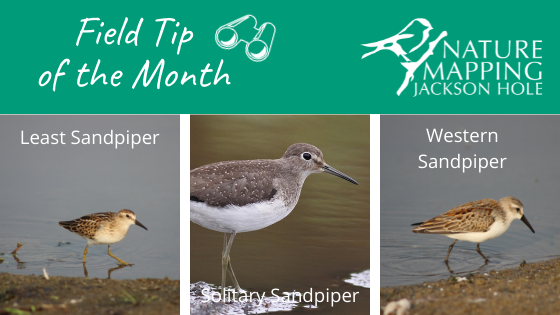Hilary Turner | Nature Mapping Program Coordinator
Fall migration is a fun time for birders and it is the only time of year we Wyomingites get to examine many members of one of my favorite groups – the shorebirds.
These members of the order Charadriiformes can be intimidating to learn. Many shorebirds look very similar but understanding habitat, behavior, and subtle differences in shape, size, and plumage can help you identify the many different species.

Larger shorebirds such as godwits, avocets and stilts are usually found wading in deeper water than smaller shorebirds such as sandpipers and plovers.
Phalaropes are often seen swimming, and their foraging behavior is quite unique. They spin in tight circles, grabbing invertebrates that get caught in their vortex.
Calidris sandpipers are a daunting group to learn, but paying close attention to subtle details is helpful in accurately identifying them.
Bill shape and size, leg color, body shape and size, primary projection (how long the primary feathers are), and plumage characteristics are key for separating species of this group.
Shorebird migration starts mid-summer, and is quite protracted, lasting through mid-to-late-October. During migration, shorebirds tend to congregate in shallow water and on mud flats.
Look for places where water had recently receded and mud has become exposed. Once you start paying close attention to the shorebirds, you will see how beautiful they really are!
